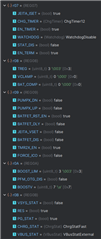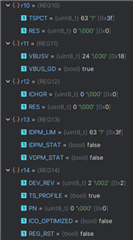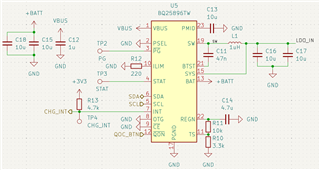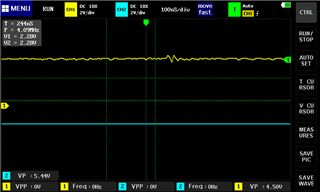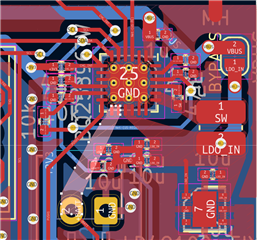Hello
I'm using bq25896 in a device I'm developing, and I have trouble figuring out why I get too little charging current. ICHG register reports 450mA when the battery is almost empty, then it gradually goes down to 100mA when VBAT is 4.1V, and by that point charging stops. I am positive that the power supply is not overloaded, USB tester shows that it happily provides over 1.5A when I connect my phone to it using the same cable.
https://e2e.ti.com/support/power-management-group/power-management/f/power-management-forum/938817/bq25895-small-charging-current-of-bq25895 seems to be a similar issue, but it was never followed up.
During the device initialization I reset the charger (REG_RST = 1), disable watchdog (WATCHDOG = 0), enable periodic ADC conversion (CONV_START = 1, CONV_RATE = 1), set charge current limit to roughly 1A (ICHG = 1000 >> 6 = 15, results in 960mA) and enable charging (CHG_CONFIG = 1)
Register dump after about a minute of charging:

